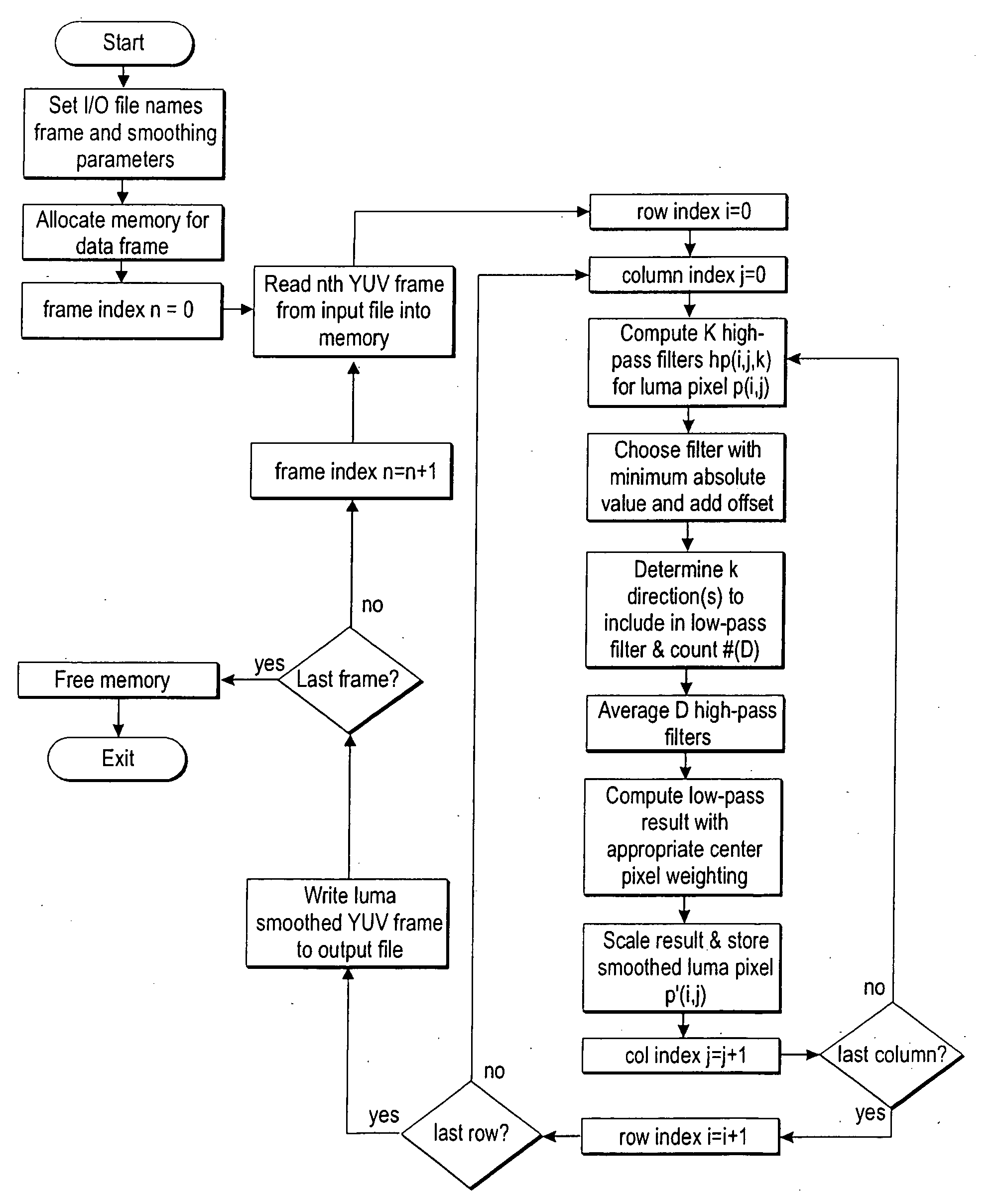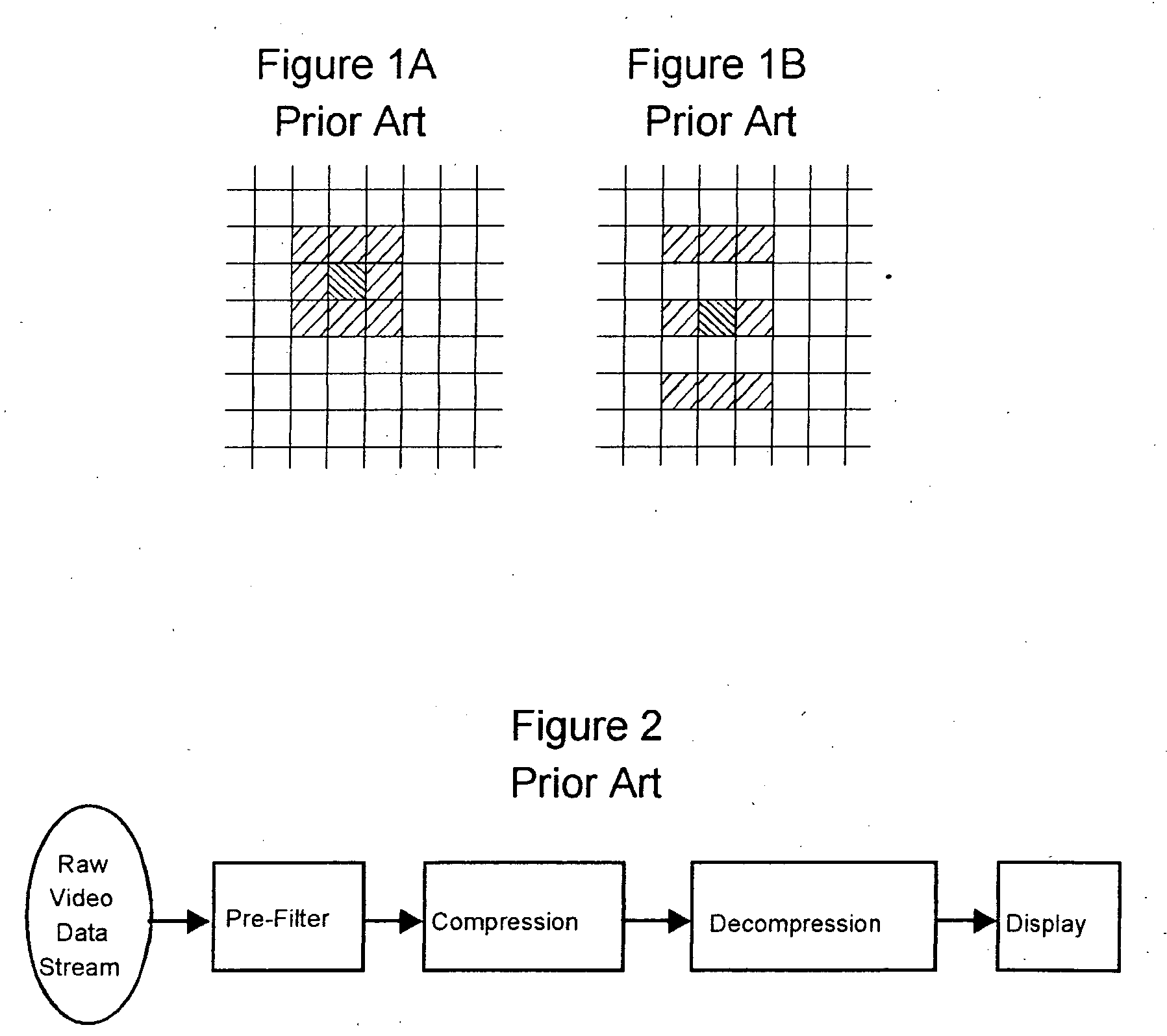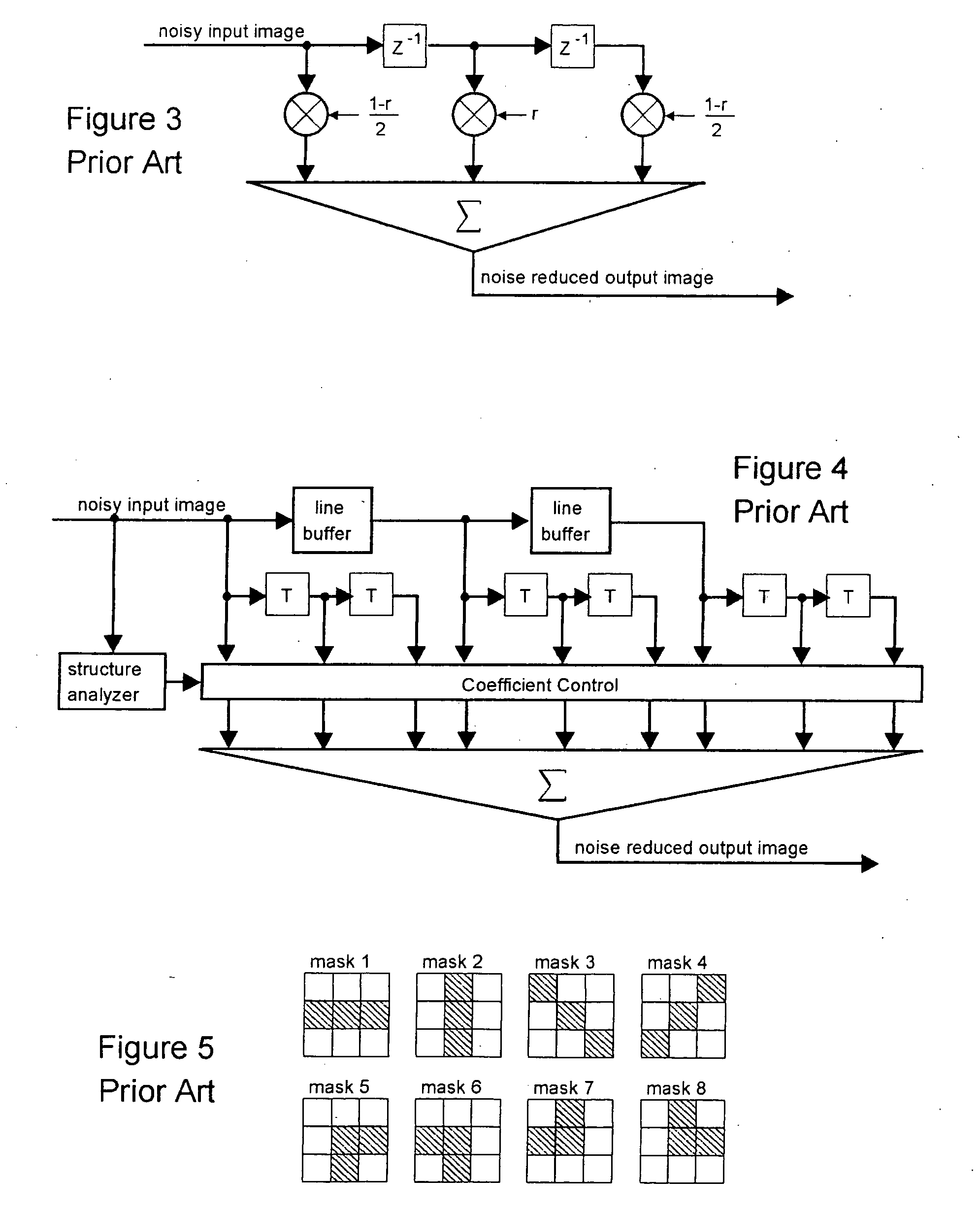A problem which is pervasive to noise filtering is that certain features of images, such as object edges, can look a lot like noise when filtering is performed on a pixel-by-pixel basis.
Noise reduction is important in connection with compression of image information, because noise may significantly reduce the effectiveness of compression schemes, particularly frequency-domain compression schemes such as the various MPEG video standards.
It is not always easy to reconcile these differences so as to achieve high quality highly compressed images.
Once the noise is present in the
signal it is very difficult to remove.
Historically, techniques such as high-frequency roll-off have been employed, frequently doing more damage to the underlying pictures than the noise itself.
As discussed in the '578 Patent, in the art of
image processing, raw images of an object / scene captured from a sensing or capture device are often subject to varying types of “noise” (elements not present in the object or environment which may nonetheless appear in the image).
The noise present in an image may be due to the characteristics of the imaging
system such as the sensor or
processing steps subsequent to the initial
image capture which may add noise while trying to achieve a different purpose.
The properties and characteristics that would indicate that a pixel or region of pixels is “noisy” and the properties that would indicate a pixel or region of pixels is an edge or a fine detail of the image are difficult to distinguish.
Thus, a fundamental problem with the removal of noise is that often a removal of what is indicated as noise may actually be a removal of fine edge or detail.
While median
hybrid has been shown to work quite well in discriminating some edges, it is deficient in several respects with regard to
edge detection.
For instance, an edge feature may lie at a 33 degree vector from a particular pixel, and thus the eight directions are inadequate in determining the edge feature.
When applied to digital images, the median
hybrid filter, if applied everywhere to all pixels, may propagate noise or shift it from pixel to pixel while attempting to remove it since there is noise along the edge feature due to the non-cardinal direction of the edge.
Median filters often introduce additional artifacts which corrupt edges in the image.
First, Wiener filters remove noise that is not very visible to the eye, such as noise related to
film grain.
These coefficients tend to be more inaccurately quantized than the
low frequency coefficients and are generally due to the noise only.
The net result is that the whole picture is reduced in quality.
The Forward Prediction (P) and Bi-directional prediction (B) frames that follow the Intra (I) frame try to constantly correct for the noise in the prediction path and so this results in the DCT artifacts changing from frame to frame.
This produces even worse predictions in the ‘B’, and ‘P’ frames which inevitably increases the QP and reduces picture quality.
The image can be corrupted by noise in different ways.
Some noise sources are located in a camera and become active during
image acquisition especially under bad lighting conditions.
Jostschulte aptly notes that the problem of a
spatial noise reduction scheme is to eliminate spatially uncorrelated noise from spatially correlated
image content.
As noted in Jostschulte, the
disadvantage of such a
system is the tendency to blur edges and lines of the image.
Jostschulte mentions that several algorithms for precise detection of edge-directions are known, but that nearly all of them have in common that a hardware implementation will be very expensive.
According to Jostschulte, if this were not the case, sharpness in object-corners could be lost.
Locally adaptable directional
low pass filtering as described in Jostschulte minimizes edge blurring, but provides no means to adjust the degree of
smoothing for optimized quality at a given
bit rate.
 Login to View More
Login to View More  Login to View More
Login to View More 


